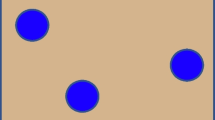Abstract
This study represents the first systematic comparison of the relative contributions of auditory and visual feedback to sequence production. Participants learned an isochronous melody that they performed on a keyboard and attempted to perform this sequence at a prescribed rate while auditory and visual feedback were manipulated. Delayed auditory feedback (DAF) and delayed visual feedback (DVF) both tended to slow production of the sequence. These effects were additive. There was no modulation of this effect of delay in either modality by the absence of feedback in the other. In contrast with past research, DAF did not increase timing variability, though DVF did. Motion analyses ruled out differences in salience of visual feedback between delayed and non-delayed conditions as an explanation of the effects of DVF. The results suggest that the effects of delayed feedback may be attributable to both sensorimotor interference and to conflicting information across feedback channels.





Similar content being viewed by others
Notes
Differences in mean finger length across participants were very small (SD = .43 cm) and were not significantly correlated with the effects of DAF or DVF.
References
Aschersleben G, Prinz W (1997) Delayed auditory feedback in synchronization. J Mot Behav 29:35–46
Dalla Bella S, Palmer C (2011) Rate effects on timing, key velocity, and finger kinematics in piano performance. PloS one 6:e20518
Finney SA (2001) FTAP: a Linux-based program for tapping and music experiments. Behav Res Meth Instrum Comput 33:65–72
Finney SA, Palmer C (2003) Auditory feedback and memory for music performance: sound evidence for an encoding effect. Mem Cognit 31:51–64
Flach R (2005) The transition from synchronization to continuation tapping. Hum Mov Sci 24:465–483
Gibson JJ (1966) The senses considered as perceptual systems. Houghton Mifflin, New York
Goebl W, Palmer C (2008) Tactile feedback and timing accuracy in piano performance. Exp Brain Res 186:471–479
Hommel B, Müsseler J, Aschersleben G, Prinz W (2001) The theory of event coding (TEC): a framework for perception and action planning. Behav Brain Sci 24:849–877
Hove MJ, Iversen JR, Zhang A, Repp BH (in press) Synchronizing with competing visual and auditory rhythms: bouncing ball meets metronome. Psychol Res
Howell P (2001) A model of timing interference to speech control in normal and altered listening conditions applied to the treatment of stuttering. In: Maassen B, Julstijn W, Kent R, Peters HFM, Van Lieshout PHMM (eds) Speech motor control in normal and disordered speech. Uttgeverij Vantilt, Nijmegen, pp 291–294
Howell P, Archer A (1984) Susceptibility to the effects of delayed auditory feedback. Percept Psychophys 36:296–302
Howell P, Sackin S (2002) Timing interference to speech in altered listening conditions. Acoust Soc Am 111:2842–2852
James W (1890) The principles of psychology, vol 2. Holt, New York
Johansson G (1973) Visual perception of biological motion and a model for its analysis. Percept Psychophys 14:201–211
Keller PE, Koch I (2008) Action planning in sequential skills: relations to music performance. Q J Exp Psychol 61:275–291
Kolers PA, Brewster JM (1985) Rhythms and responses. J Exp Psychol Hum Percept Perform 11:814–827
Langenberg U, Hefter H, Kessler K, Cooke J (1998) Sinusoidal forearm tracking with delayed visual feedback. I. Exp Brain Res 118:161–170
Lee DN, Reddish PE (1981) Plummeting gannets: a paradigm of ecological optics. Nature 293:293–294
MacKay DG (1987) The organization of perception and action: a theory for language and other cognitive skills. Springer, New York
Madison G, Merker B (2004) Human sensorimotor tracking of continuous subliminal deviations from isochrony. Neurosci Lett 370:69–73
Occelli V, Spence C, Zampini M (2011) Audiotactile interactions in temporal perception. Psychon Bull Rev 18:429–454
Patel AD, Iversen JR, Chen Y, Repp BH (2005) The influence of metricality and modality on synchronization with a beat. Exp Brain Res 163:226–238
Pfordresher PQ (2003) Auditory feedback in music performance: evidence for a dissociation of sequencing and timing. J Exp Psychol Hum Percept Perform 29:949–964
Pfordresher PQ (2005) Auditory feedback in music performance: the role of melodic structure and musical skill. J Exp Psychol Hum Percept Perform 31:1331–1345
Pfordresher PQ (2006) Coordination of perception and action in music performance. Adv Cognit Psychol 2:183–198
Pfordresher PQ (2008) Auditory feedback in music performance: the role of transition-based similarity. J Exp Psychol Hum Percept Perform 34:708–725
Pfordresher PQ, Dalla Bella S (2011) Delayed auditory feedback and movement. J Exp Psychol Hum Percept Perform 37:566–579
Pfordresher PQ, Kulpa JD (2011) The dynamics of disruption from altered auditory feedback: further evidence for a dissociation of sequencing and timing. J Exp Psychol Hum Percept Perform 37:949–967
Pfordresher PQ, Palmer C (2002) Effects of delayed auditory feedback on timing of music performance. Psychol Res 66:71–79
Prinz W, Aschersleben G, Koch I (2009) Cognition and action. In: Morsella E, Bargh J, Gollwitzer PM (eds) Oxford handbook of human action. Oxford University Press, Oxford, pp 35–71
Repp BH (1999) Effects of auditory feedback deprivation on expressive piano performance. Music Percept 16:409–438
Repp BH, Penel A (2002) Auditory dominance in temporal processing: new evidence from synchronization with simultaneous visual and auditory sequences. J Exp Psychol Hum Percept Perform 28:1085–1099
Repp BH, Penel A (2004) Rhythmic movement is attracted more strongly to auditory than to visual rhythms. Psychol Res 68:252–270
Smith WM, McCrary JW, Smith KU (1960) Delayed visual feedback and behavior. Science 132:1013–1014
van den Heuvel MRC, Balasubramaniam R, Daffertshofer A, Longtin A, Beek PJ (2009) Delayed visual feedback reveals distinct time scales in balance control. Neurosci Lett 452:37–41
Yates AJ (1963) Delayed auditory feedback. Psychol Bull 60:213–232
Acknowledgments
The data reported here were collected while Mr. Kulpa was a student at the University at Buffalo. This research was supported in part by National Science Foundation grant BCS-0642592. We thank Caroline Palmer, Bruno Repp, and Amir Lahav for helpful comments on an earlier version of this paper.
Conflict of interest
The authors declare that they have no conflict of interest.
Author information
Authors and Affiliations
Corresponding author
Rights and permissions
About this article
Cite this article
Kulpa, J.D., Pfordresher, P.Q. Effects of delayed auditory and visual feedback on sequence production. Exp Brain Res 224, 69–77 (2013). https://doi.org/10.1007/s00221-012-3289-z
Received:
Accepted:
Published:
Issue Date:
DOI: https://doi.org/10.1007/s00221-012-3289-z




